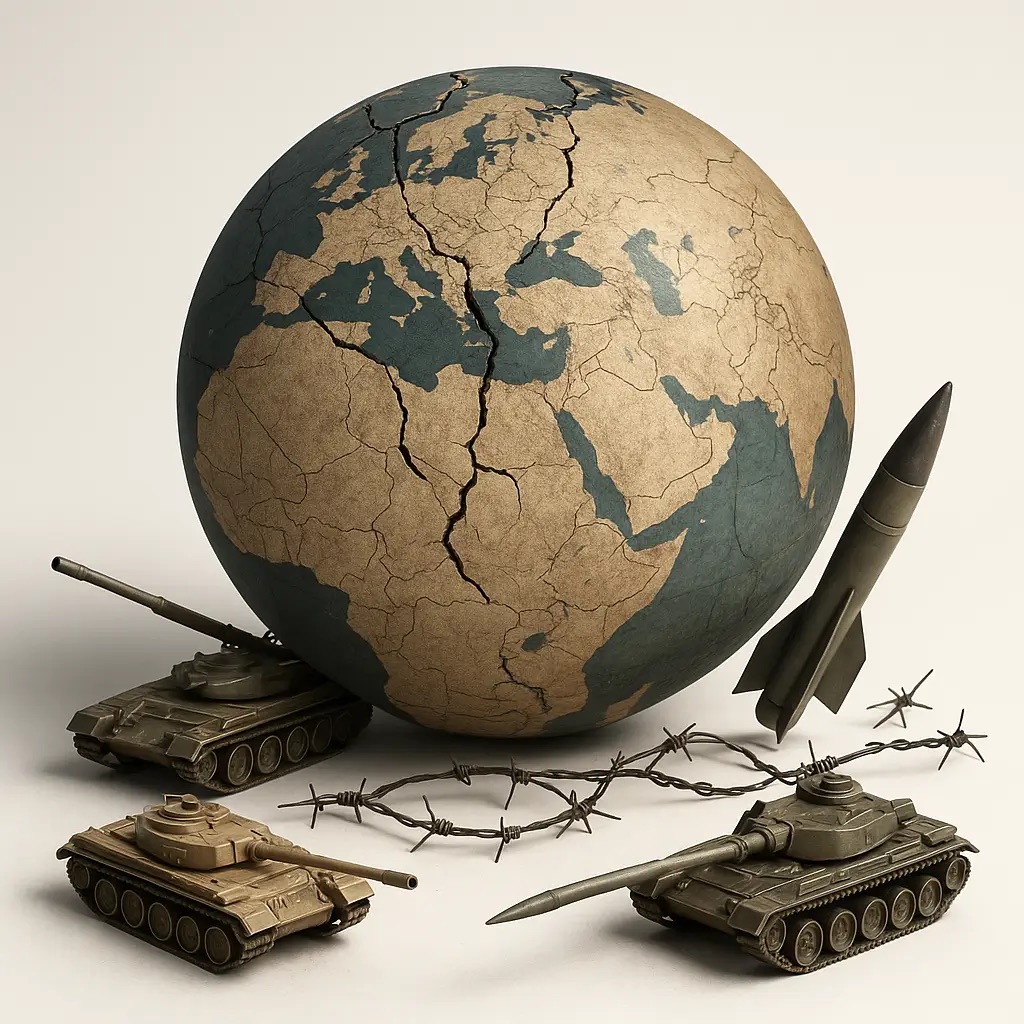Rising Tensions Over Water Resources
2025 has seen an unprecedented surge in water-related disputes. In just the first four years, reports show around 785 clashes—over 25% more than previous decades. As freshwater becomes scarcer, such tensions are rapidly intensifying.
Regional Armed Skirmishes and Proxy Conflicts
Across various continents, low- to mid-intensity conflicts continue:
- Africa: Ongoing battles like the DR Congo’s M23 offensives around Goma and Bukavu.
- Eastern Europe: Cross-border gunfire, especially around Ukraine–Russia’s Sumy and Belgorod regions.
- Somalia: Al-Shabaab’s Shabelle offensive reshapes the local security landscape.
Middle East Proxy Confrontations
The Iran–Israel proxy struggle remains unresolved. Iran supports groups like Hezbollah and Hamas, while Israel counters arms transfers and conducts occasional strikes — a dynamic that’s escalated into direct exchanges in 2024–2025 .
South Asia’s India–Pakistan Flashpoints
Recent border clashes and drone-missile exchanges in Punjab and Kashmir have brought the world to attention. The likelihood of escalation remains high, fueled by militant attacks and retaliatory strikes .
What’s Fueling These Conflicts?
Resource Scarcity
Water scarcity is a global driver—rising demand, climate change, and poor governance are igniting cross-border friction.
Regional Power Struggles
From armed non-state actors in Africa to territorial disputes, local political dynamics are fueling persistent violence.
Shadow Wars and Strategic Rivalry
Proxies and hidden operations are now central to modern warfare—state actors leverage non-state groups, blurring conflict lines and complicating diplomacy.
Why It Matters – Global Implications
- Trade disruption: Conflict zones hinder commerce and development.
- Human cost: Civilians bear the brunt—displacement, trauma, reduced access to essentials.
- Potential spillover: Localized violence risks wider escalation, especially where nuclear-capable states are involved.
Toward Solutions
Strengthened Resource Governance
Better water-sharing agreements and climate adaptation measures can ease tensions in sensitive regions.
Diplomatic Incentives
International mediation—impartial observers, confidence-building steps—can reduce mistrust along disputed borders.
Monitoring Proxy Activity
Transparency, arms control treaties, and enforcing international norms can help curb the rise of covert conflict.
Final Thoughts
Conflict in 2025 is multifaceted—from resource wars to proxy battles and regional skirmishes. Addressing them requires robust diplomacy, fair resource-sharing, and coordinated international action.

